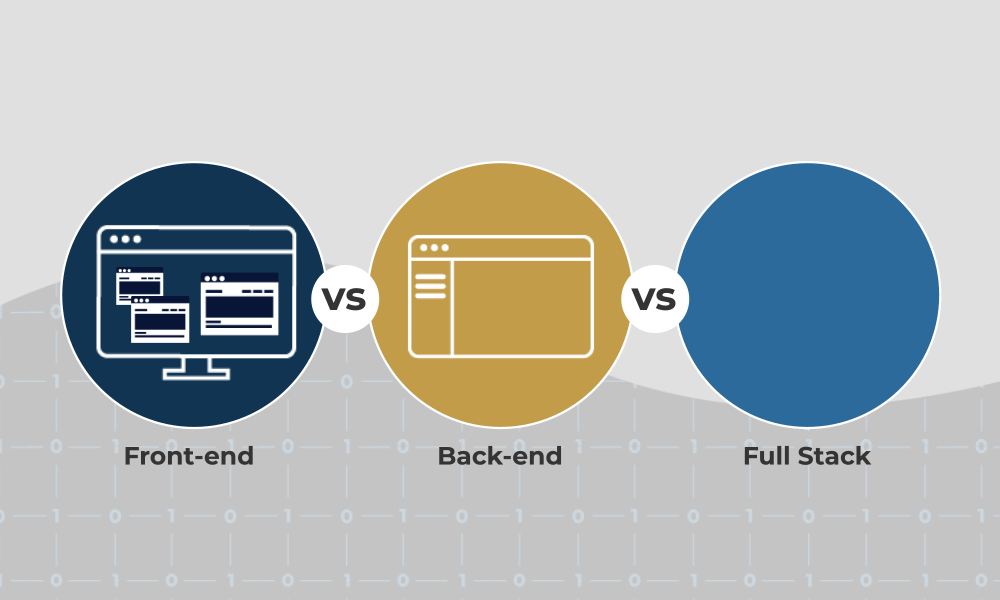If you’re looking to get qualified as a web developer, you’ll likely have heard people in the industry talk about three different developer roles, namely front-end, back-end and full stack developers.
What do each of these roles involve, where do they overlap, and which is the right one for you? This introduction will help you better understand the differences and similarities between these three types of developers.
-
Front-end developers
The front-end of a website is the part that the users will see and interact with; in other words, the browser where the user interface appears. The front-end is also known as the presentation layer.
The front-end is built using three key components.
HTML (HyperText Markup Language): Every website out there is built using HTML. It’s the backbone of the world wide web, used to define the site’s structure and content.
CSS (Cascading Style Sheets): CSS will define how the HTML appears visually on a web page. CSS determines fonts, colours, layout, background images and more.
JavaScript: This programming language allows front-end developers to add more interactivity to the websites they build. Recent developments in JavaScript (and improvements in browsers) have made it possible to do more complex work on the front-end, creating features that used to be reserved for more complex back-end languages.
Front-end developer roles require a good understanding of HTML, CSS, JavaScript and various JavaScript frameworks (for example, AngularJs, React and Node.js). It’s also important to have a creative mindset and an eye for design, as you’ll be dealing with the presentation of the websites you build.
Average annual salary for front-end developers: $92.738/yr (Glassdoor.com)
-
Back-end developers
The back-end is the part of the website that users don’t see. It refers to the server side, which is responsible for returning the page, and for storing or fetching user data. It’s also known as the data access layer.
Back-end programming languages (like Python, PHP or Ruby) are often used to build content management systems and large, complex web applications.
The front-end and back-end of a website interact with each other, and so do front-end and back-end developers. A back-end developer’s role will include working with a front-end developer to ensure their behind-the-scenes code works within the visual design of the website.
A back-end developer will deal more with logic than with creativity. This role requires a good knowledge of frameworks, software architecture, databases and servers. Different programming languages will be required for different jobs, depending on what the best fit might be.
It must be said that the line between front-end and back-end functionalities is blurring as front-end software and browsers become more powerful. This is making it easier for developers to enter into “full stack” roles.
Average annual salary for back-end developers: $114,255/yr (Glassdoor.com)
-
Full stack developers
Full stack development encompasses both front-end and back-end development work. Full stack developer roles require a holistic view of every website, to find a full solution.
A developer in this position must know where (and how) to apply the various front-end and back-end technologies. They must be familiar with HTML, CSS and JavaScript, as well as a few popular back-end languages. Many of them will specialize in one specific back-end language.
Average annual salary for full stack developers: $112,491/yr (Indeed.com)
There has been a rise in demand for full stack developers in recent years. UK recruiters report a 607% increase in demand over the past three years, and the US Bureau of Labour Statistics predicts a significant surge in job opportunities for full stack developers by 2024.
To find your place in the world of full stack development, and secure a job in this lucrative industry, enrol in a Full Stack Web Developer Bootcamp. This online course will give you the grounding you need to build dynamic web applications and learn a number of useful programming languages. In just six months, you’ll be ready to start looking for suitable full stack developer roles.


